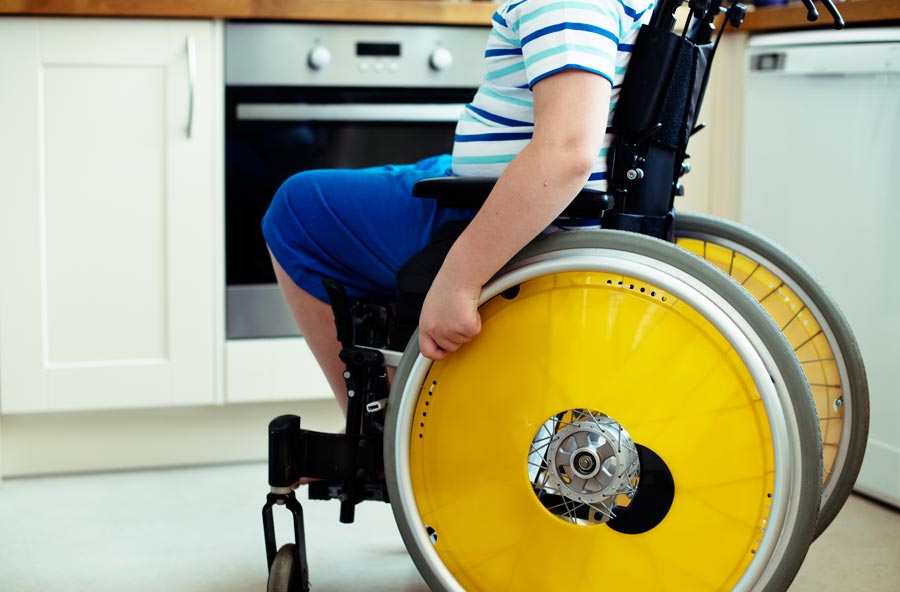
Seniors are putting off moves to traditional senior housing, such as nursing homes, retirement communities, and assisted living facilities, in favor of independence at their home. This concept of “aging in place” benefits older adults who do not need round-the-clock assistance and can significantly reduce the cost of living for these seniors. Some find that living in their family home helps maintain dignity, while others benefit from simple living that results from downsizing. Whether it’s in an existing house or a new smaller space, safe aging in place requires a plan, which often requires renovating or retrofitting a home to meet a senior’s needs.
Aging in place in an existing home
Depending on current or anticipated needs, your current home may make the most sense for aging in place. If, for example, you do not have a mortgage on the house, then your housing expenses will be limited to property taxes, insurance, utilities, and maintenance. Your housing budget savings can be applied toward services that you may need in the future. And although you’ll be avoiding the considerable monthly expense of senior housing, there are accessibility modifications and adaptations you can make to your home that can recreate the safety of an assisted living community.
Some of the more substantial modifications that may be necessary include:
- Entry ramps. Stairs can be treacherous for many older adults, not just those who use a walker, mobility scooter or wheelchair. A ramp or flat entry to the home is crucial.
- Widening doorways. Most residential doorways cannot accommodate wheelchairs. Widening these passageways to 36 inches facilitates mobility throughout the house.
- Lowering countertops. High countertops and kitchen island dining areas are tricky for many seniors to use. If a senior uses a wheelchair, a high counter is useless. By lowering these surfaces, and creating wheelchair space below them through lower cabinet removal, you can make kitchens and bath areas more usable.
These renovations can be costly and quite involved, but other less expensive and less permanent adaptability devices can be added to any home.
Smaller adaptability modifications include:
- Grab bars. These make entry into a home, walking up stairs and using the bathroom more comfortable. Grab bars are readily available and simple to install.
- Lever doorknobs. Seniors with arthritis sometimes experience difficulty with round doorknobs. Replacing these with lever-style handles make entering and exiting rooms a pain-free experience.
- Task lighting. Since eyesight can diminish with age, adding task lights under cabinets and above sitting areas can make life easier for a senior.
Getting help with accessibility modifications
If the idea of retrofitting your home into a senior-safe living space seems overwhelming, there are professionals and assistance available. Some home remodeling companies employee-certified aging-in-place specialists. These professionals work with homeowners and occupational therapists to help design and remodel homes for safety and comfort. Referrals for certified professionals in your area can be found at NAHB.org.
Downsizing
Existing residences are not always the ideal setting for aging in place. A two-story colonial with upstairs bedrooms can make just getting to bed an uncomfortable experience. And if the home has many unused rooms, housing expenses can eat away at a budget unnecessarily. Many seniors find downsizing to a smaller home to be the perfect interim solution. Moving to a more modest home, be it a condo or a house with less square footage, can help reduce housing expenses. Sixty-one percent of employed Americans plan to work at least part-time during retirement, primarily due to housing expenses. Reducing your bills gives you more freedom to live as you want, not as you must.
Downsizing has other benefits, too, such as reducing clutter and lowering utility bills. Some seniors have even embraced the “tiny home” trend as an extreme way to come close to eliminating monthly housing expenses. Whatever your choice in downsizing, before making the decision it’s a good idea to know your local real estate market. For example, the average listing price for a home in Madison is approximately $304,000. Once you know what you want, you can get in touch with a real estate company to help you find the perfect property.
There are several options for seniors looking to age in place. Existing homes can be modified to be as comfortable as senior housing and downsizing can help seniors live simply and safely.
by Patrick Young






 Buying a home can be a complex and time-consuming process. If you need that home to include certain accessibility features to accommodate a disability, the process can be even more of a challenge.
Buying a home can be a complex and time-consuming process. If you need that home to include certain accessibility features to accommodate a disability, the process can be even more of a challenge.